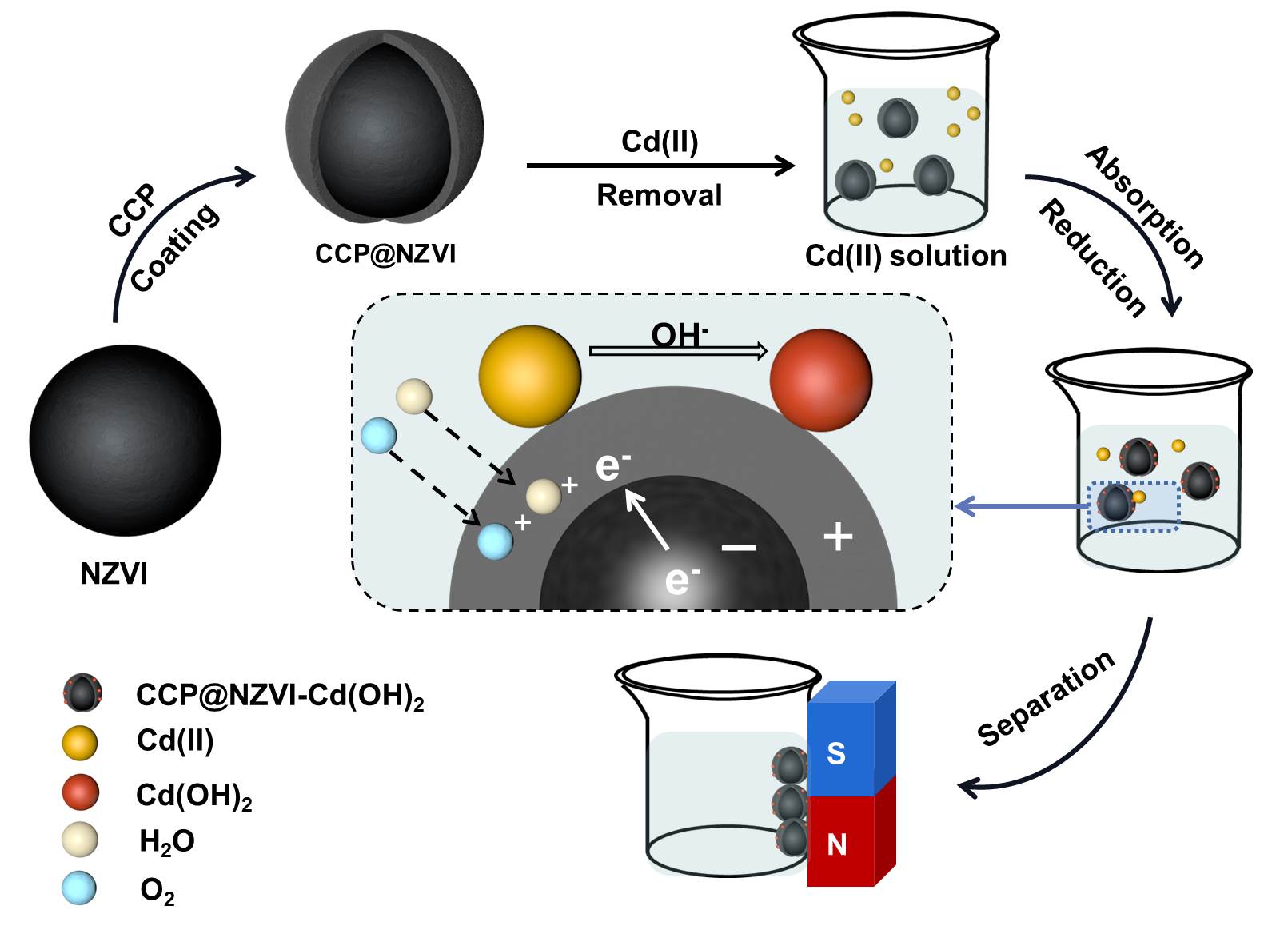
Recently, Wu Zhengyan and Zhang Jia's team, from Hefei Institutes of Physical Science (HFIPS), Chinese Academy of Sciences (CAS), in collaboration with Professor CAI Dongqing in Donghua University, developed a promising remedy for the rapid and efficient removal of Cd(II) in water, which is a step forward in heavy metal pollution remediation.
The paper was published in Journal of Environmental Chemical Engineering.
Water contaminated by heavy metal ions has become a worldwide environmental risk for years. Cd(II) is a typical heavy metal ion drawing much concern because of its high toxicity. It is still a great challenge to develop economical and environment-friendly remediation technology.
In this experiment, scientists integrated nanoscale zero-valent iron with conductive carbon paint to fabricate a primary battery nanosystem and found the nanocomposite removed Cd(II) in water quickly.
They revealed the mechanism by studying the interaction between nanocomposite and Cd(II), following an investigation in the removal performance of the nanocomposite under different conditions. Additionally, the biosafety of this strategy was evaluated.
This study provided a low-cost and eco-friendly technology to achieve rapid Cd(II) removal in water, which may have tremendous prospects for application in the environmental field.
This research was supported by the National Key R&D Program of China, the Science and Technology Service Program of Chinese Academy of Sciences, and the Key R&D Program of Ningxia Province.

Schematic illustration of removal mechanism. (Image by Guo Xinyue)